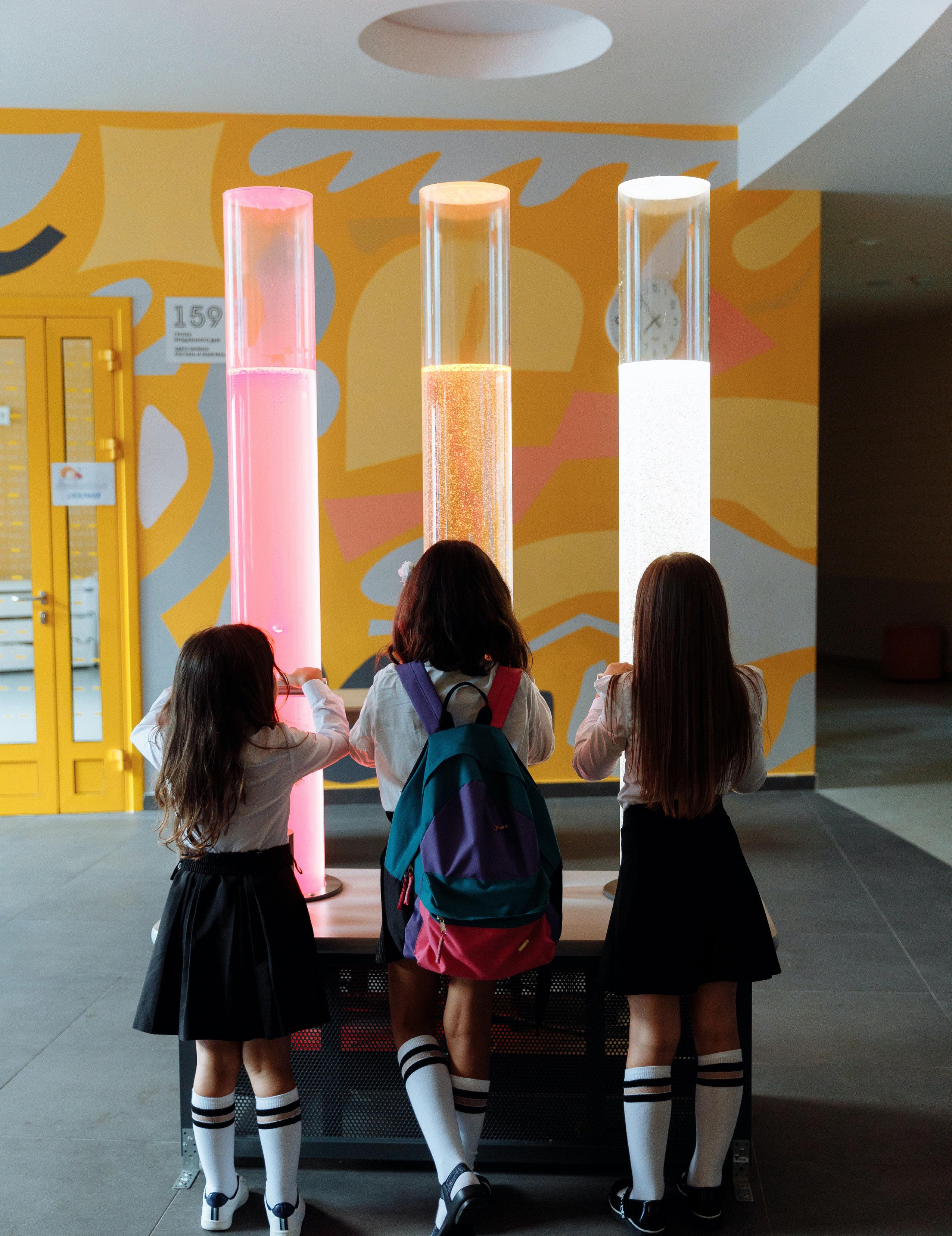
1 minute read
Executive Summary
Spatial Environment
KEY FINDINGS: 1. Schools’ outdoor green space has a significant positive impact on health, learning and academic achievement.51, 173–181 2. Schools should be flexible and accommodate for a variety of learning situations and activities: social/private, noisy/quiet.182–189 3. Less dense classrooms are related with increased student ownership and better student-teacher connection.190–195 4. Ventilation investments are a necessary and long-lasting measure to prevent COVID-19 and support student performance and general
health.24, 26, 196–208
5. Building disrepair has been associated with student performance and absenteeism.209–218 6. Green schools haven’t been directly associated with increased student performance, but their enhanced IEQ, relation to nature and energy efficiency are beneficial for students.213, 219–221 7. Flexible learning spaces allow students to be less sedentary, enable improved student performance, but may present pedagogical challenges.222–230 8. Classrooms that incorporate technology, such as Active Learning
Classrooms may increase student engagement and performance.191, 215, 229,
231–233
9. Ergonomic furniture positively impacts student health.234–240
The spatial environment category includes school design characteristics both inside buildings and outside of the classrooms on the school grounds. This category includes subcategories: school design characteristics, school operations and maintenance that influence the functioning and operations of building systems and surroundings, and the classroom environment (e.g. furnishings, technology, flexible organization).
Guidelines, Standards often referenced: U.S.
Department of Education, Office of Educational Research and Improvement: Space Guidelines for Planning Educational Facilities, National Institute of Building Sciences: Whole Building Design Guide for Educational Facilities, books and planning guidelines offered by state agencies. For example, funding models in many states are based on a per student square footage allowance, which may or may not align with allowances.







